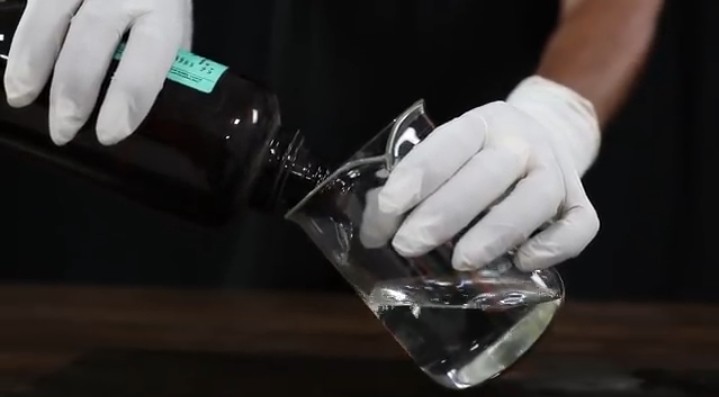Hydrochloric Acid
Our Products
Have Any Questions?

Hydrochloric acid is a clear, colorless, highly pungent solution of hydrogen chloride (HCl) in water. It is a highly corrosive, strong mineral acid with many industrial uses. Hydrochloric acid is found naturally in gastric acid. When it reacts with an organic base it forms a hydrochloride salt.hydrochloric acid is a colourless inorganic chemical system with the formula HCL . Hydrochloric acid has a distinctive pungent smell . It is classified as strongly acidic and can attack the skin over a wide composition range , since the hydrogen chloride composition range , since the hydrogen chloride completely dissociates in an aqueous solution .
It was historically called acidum salis, muriatic acid, and spirits of salt because it was produced from rock salt and green vitriol (by Basilius Valentin’s in the 15th century) and later from the chemically similar common salt and sulfuric acid (by Johann Rudolph Glauber in the 17th century). Free hydrochloric acid was first formally described in the 16th century by Libavius. Later, it was used by chemists such as Glauber, Priestley, and Davy in their scientific research.
With major production starting in the Industrial Revolution, hydrochloric acid is used in the chemical industry as a chemical reagent in the large-scale production of vinyl chloride for PVC plastic, and MDI/TDI for polyurethane. It has numerous smaller-scale applications, including household cleaning, production of gelatin and other food additives, descaling, and leather processing. About 20 million tonnes of hydrochloric acid are produced worldwide annually.
Etymology
Hydrochloric acid was known to European alchemists as spirits of salt or acidum salis ( salt acid ) . Both names are still used , especially in other languages , such as German : Dutch , Polish : Gaseous HCL was called marine acid air .
Structure and reactions
Hydrochloric acid is the salt of the hydronium ion , H3O+ and chloride . It is usually prepared by treating HCL with water .
HCL + H2O -HO + CI-
However , the speciation of hydrochloric acid is more complicated than this simple equation implies . The structure of bulk water is infamously complex , and likewise , the formula HO+ is also a gross oversimplification , H+ , present in hydrochloric acid . A combined IR , Raman , X -ray and neutron diffraction study of concentrated solution of hydrochloric acid revealed that the primary form of H+ in these solution is H5O2+ , which along with the chloride anion , is hydrogen – bonded to neighboring water molecules in several different ways , ( In H5O2+ , the proton is sandwiched midway between two water molecules at 180 deg . ) . The author suggests that H3O+ may become more important in dilute HCL solutions .
Hydrochloric acid is a strong acid , since it is completely dissociated in water . It can therefore be used to prepare salts containing the CI- anion called chlorides .
Hydrochloric acid is used in chemical analysis to prepare samples for analysis . Concentrated hydrochloric acid dissolves many metals and forms oxidized metal chlorides and hydrogen gas . It also reacts with besic compounds such as calcium carbonate or copper oxide , forming the dissolved chlorides that can be analyzed .
Applications
Hydrochloric acid is a strong inorganic acid that is used in many industrial processes such as refining metal . The application often determines the required product quality .
Production of organic compounds
Another major use hydrochloric acid is in the production of organic compounds , such as vinyl chloride and dichloroethane for PVC . This is often captive use , consuming locally produced hydrochloric acid that never actually reaches the open market . Other organic compounds produced with hydrochloric acid include bisphenol , A for polycarbonate , activated carbon , and ascorbic acid , as well as numerous pharmaceutical products .
2H2C = CH2 + 4HCL + O2 – 2CICH2CH2CI + 2H2C
